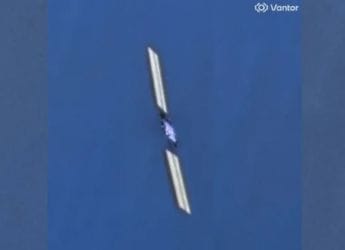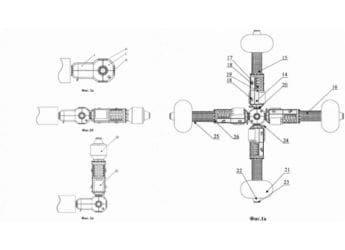- Home
- Science
- Science News
- Scientists Just Solved the Mystery of the Moon’s Lopsided Dust Halo
Scientists Just Solved the Mystery of the Moon’s Lopsided Dust Halo
Research shows the Moon’s dust halo is thicker on the sunlit side because warm soil launches more dust during daytime meteor impacts than at night.

Photo Credit: Wikipedia Common
A lopsided cloud of dust created by tiny meteor impacts follows the moon everywhere
For decades, scientists have known the Moon's faint dust halo sits unevenly around it — denser over the sunlit side than on the dark side. A new study suggests the culprit is the Moon's extreme day–night temperature swings. Using computer models, the team found that daytime meteor impacts fling about 6–8% more dust skyward than cold-night strikes, making the dayside dust thicker, skewing the cloud toward sunlight.
Heat and the Skewed Halo
According to the new study, the team simulated micrometeoroid strikes on hot daytime soil versus cold-night soil. Daytime impacts released 6–8% more dust and lofted more particles into orbit. Sébastien Verkercke, a postdoctoral researcher at the Centre National D'Etudes Spatiales (France's national space agency) in Paris and the new study's first author, explains, “The ejected dust grains are then individually tracked to monitor their distribution in space”, meaning midday hits throw extra dust aloft.
NASA warns lunar dust “can be damaging to everything from lunar landers to spacesuits and human lungs if inhaled”, highlighting why tracking the dust matters for space missions. Even Mercury's bigger day–night swings should amplify this asymmetry — ESA's BepiColombo probe may soon test it.
Meteoric Origins of the Lunar Dust
Micrometeoroids constantly pelt the Moon's surface, chipping rock into dust. Each tiny strike sends grains aloft, forming a tenuous halo. In 2015, NASA's LADEE orbiter confirmed a dust halo hundreds of miles above the Moon.
CU Boulder physicist Mihály Horányi notes even “a single dust particle from a comet striking the Moon's surface lofts thousands of smaller dust specks into the airless environment”, with regular impacts maintaining the haze. Curiously, the cloud is asymmetrical — denser on the sunlit side near dawn.
Get your daily dose of tech news, reviews, and insights, in under 80 characters on Gadgets 360 Turbo. Connect with fellow tech lovers on our Forum. Follow us on X, Facebook, WhatsApp, Threads and Google News for instant updates. Catch all the action on our YouTube channel.
Related Stories
- Samsung Galaxy Unpacked 2025
- ChatGPT
- Redmi Note 14 Pro+
- iPhone 16
- Apple Vision Pro
- Oneplus 12
- OnePlus Nord CE 3 Lite 5G
- iPhone 13
- Xiaomi 14 Pro
- Oppo Find N3
- Tecno Spark Go (2023)
- Realme V30
- Best Phones Under 25000
- Samsung Galaxy S24 Series
- Cryptocurrency
- iQoo 12
- Samsung Galaxy S24 Ultra
- Giottus
- Samsung Galaxy Z Flip 5
- Apple 'Scary Fast'
- Housefull 5
- GoPro Hero 12 Black Review
- Invincible Season 2
- JioGlass
- HD Ready TV
- Laptop Under 50000
- Smartwatch Under 10000
- Latest Mobile Phones
- Compare Phones
- Huawei Nova 15
- Huawei Nova 15 Pro
- Huawei Nova 15 Ultra
- OnePlus 15R
- Realme Narzo 90x 5G
- Realme Narzo 90 5G
- Vivo S50 Pro Mini
- Vivo S50
- Asus ProArt P16
- MacBook Pro 14-inch (M5, 2025)
- Huawei MatePad 11.5 (2026)
- OnePlus Pad Go 2 (5G)
- Huawei Watch 10th Anniversary Edition
- OnePlus Watch Lite
- Acerpure Nitro Z Series 100-inch QLED TV
- Samsung 43 Inch LED Ultra HD (4K) Smart TV (UA43UE81AFULXL)
- Asus ROG Ally
- Nintendo Switch Lite
- Haier 1.6 Ton 5 Star Inverter Split AC (HSU19G-MZAID5BN-INV)
- Haier 1.6 Ton 5 Star Inverter Split AC (HSU19G-MZAIM5BN-INV)

















